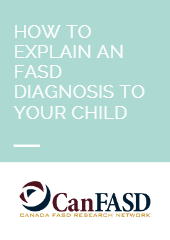FREE PDF DOWNLOADS OF SOCIAL STORIES FOR CHILDREN WITH AUTISM & OTHER CONDITIONS
– CLICK ON THE LINKS BELOW
Behaviour & MannersBodyBoundariesCelebrationsCommunicationChangesEmotional RegulationFoodGoing to Different PlacesOutdoorsHealth
|
Medical ConditionsAnxiety Around the War with Russia and Ukraine Everyone is Diagnosed Frequently Feelings of Anxiety and Depression What Autism Means and What it Doesn’t Mean What Autism Means and What it Doesn’t Mean 2 PeopleAdults Help Children Fix Mistakes Working towards reconciliation SafetySafety Wherever I Go” (1-Boy Version) Safety Wherever I Go” (2-Girl Version) Watching a Tragedy on Television School | NurseryPreschool to elementary school Self-care |
Understanding Social Stories for
Autism and Learning Difficulties
Social stories are powerful tools designed to provide guidance, support, and structure for individuals facing challenges related to learning difficulties and autism. Developed by Carol Gray, these narrative-based interventions offer a structured way to communicate information and foster understanding in a clear and accessible manner.
What Are Social Stories? Social stories are short, personalised narratives that use descriptive text and visuals to explain social situations, behaviours, and concepts. Tailored to the needs and comprehension levels of individuals on the autism spectrum or with learning difficulties, these stories aim to enhance understanding, reduce anxiety, and promote positive behaviour.
How Do They Work? Social stories break down complex situations into smaller, manageable steps, making them easier to grasp. They outline appropriate behaviours, responses, and expectations in various scenarios, ranging from daily routines to social interactions. By offering a clear framework for understanding what to expect, these stories empower individuals to navigate situations with greater confidence.
Benefits for Learning Difficulties and Autism:
- Enhanced Communication: Social stories help individuals with autism and learning difficulties grasp abstract concepts and social cues, improving their communication skills and interactions.
- Reduced Anxiety: By detailing what to anticipate in different situations, social stories help alleviate anxiety often experienced by those with these conditions.
- Improved Behaviour: Social stories provide a roadmap for appropriate behaviours, empowering individuals to respond positively to various situations.
- Building Independence: Individuals can learn to make informed decisions and act independently by understanding the world around them through social stories.
Creating Effective Social Stories:
- Personalisation: Tailor each story to the individual’s preferences, abilities, and needs for maximum impact.
- Visual Aids: Incorporate images or symbols alongside text to reinforce understanding and engagement.
- Positive Focus: Highlight positive outcomes and behaviours, promoting a constructive approach to challenges.
- Consistency: Consistently review and revisit social stories to reinforce learning and encourage retention.
Utilising Social Stories:
- Home: Social stories can be integrated into daily routines at home, promoting smoother transitions and behaviours.
- School: In educational settings, these stories help individuals adapt to classroom routines and social interactions.
- Community: Social stories prepare individuals for outings, events, and public spaces, enhancing their comfort and participation.
Incorporating social stories into the lives of individuals with learning difficulties and autism can lead to increased understanding, improved behaviour, and greater overall well-being. By breaking down complex situations into relatable narratives, these tools provide a bridge to a more connected and confident life.








